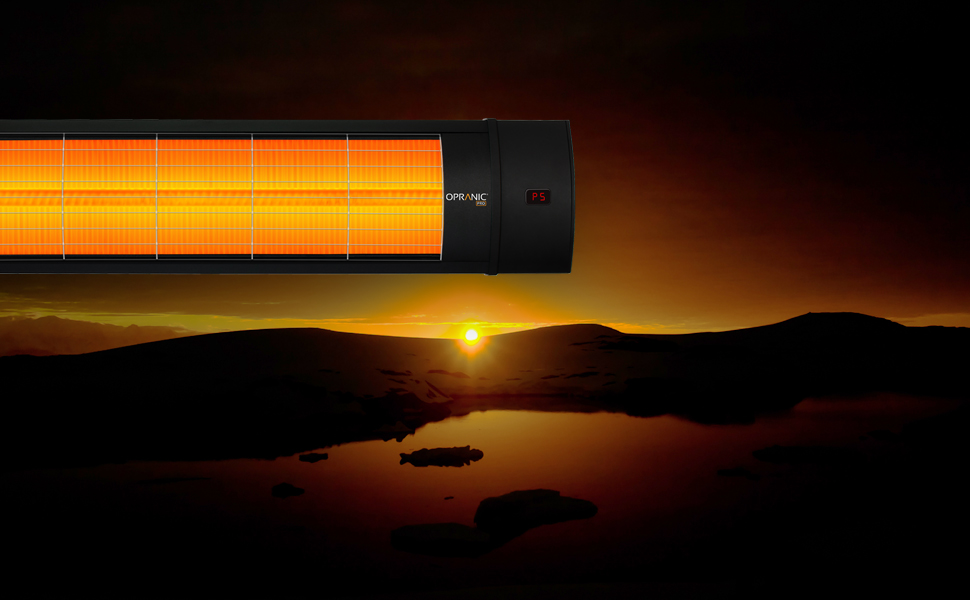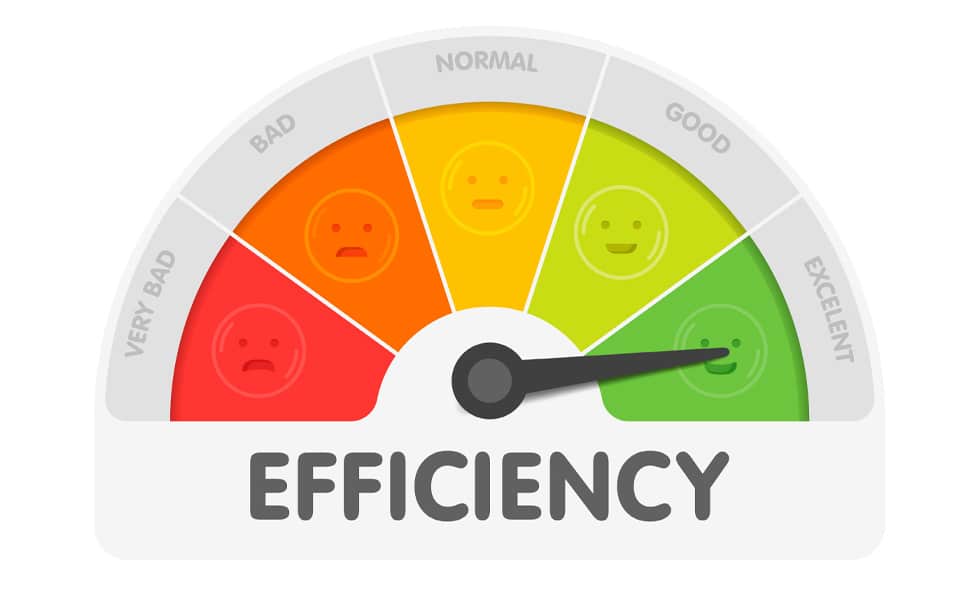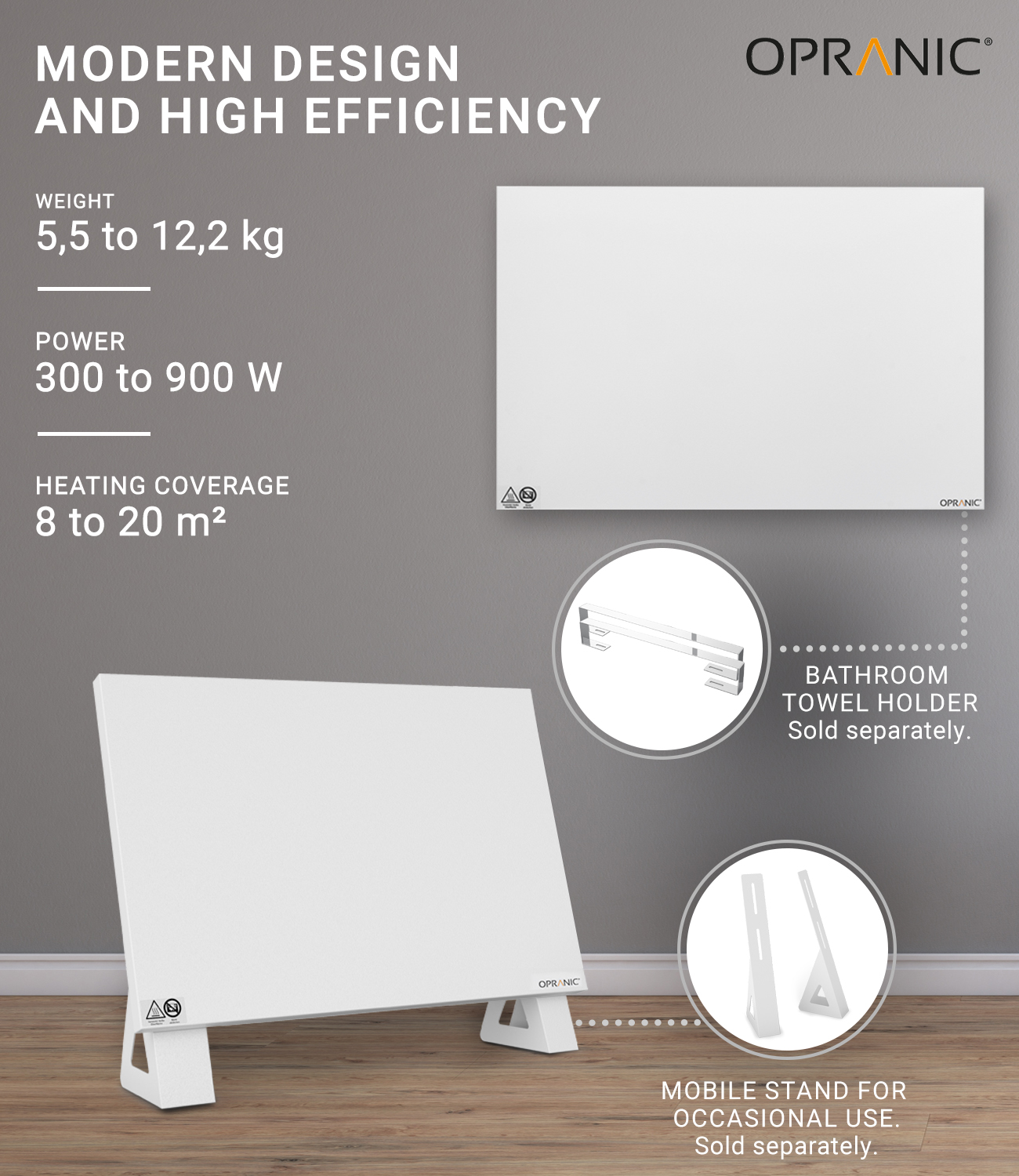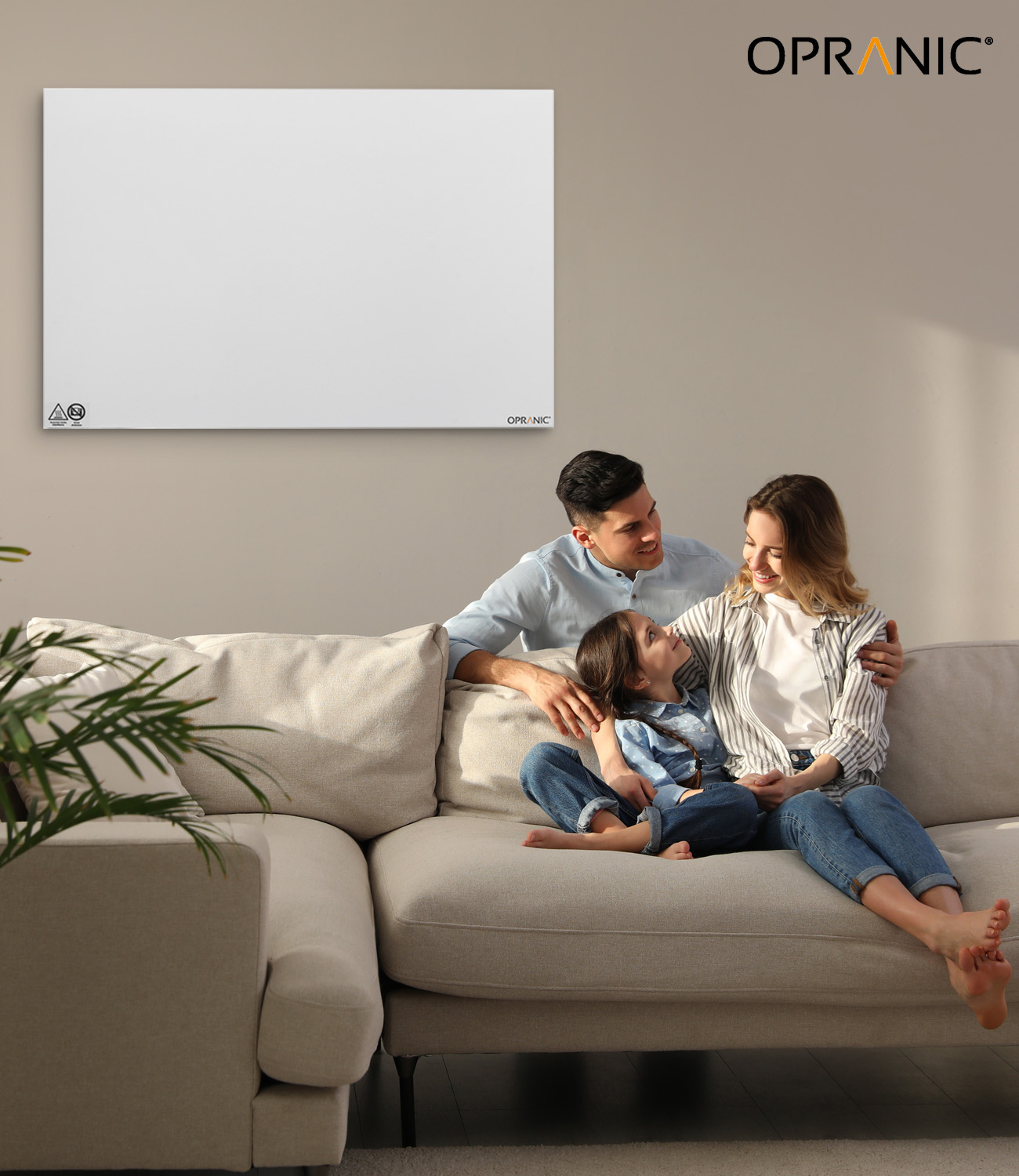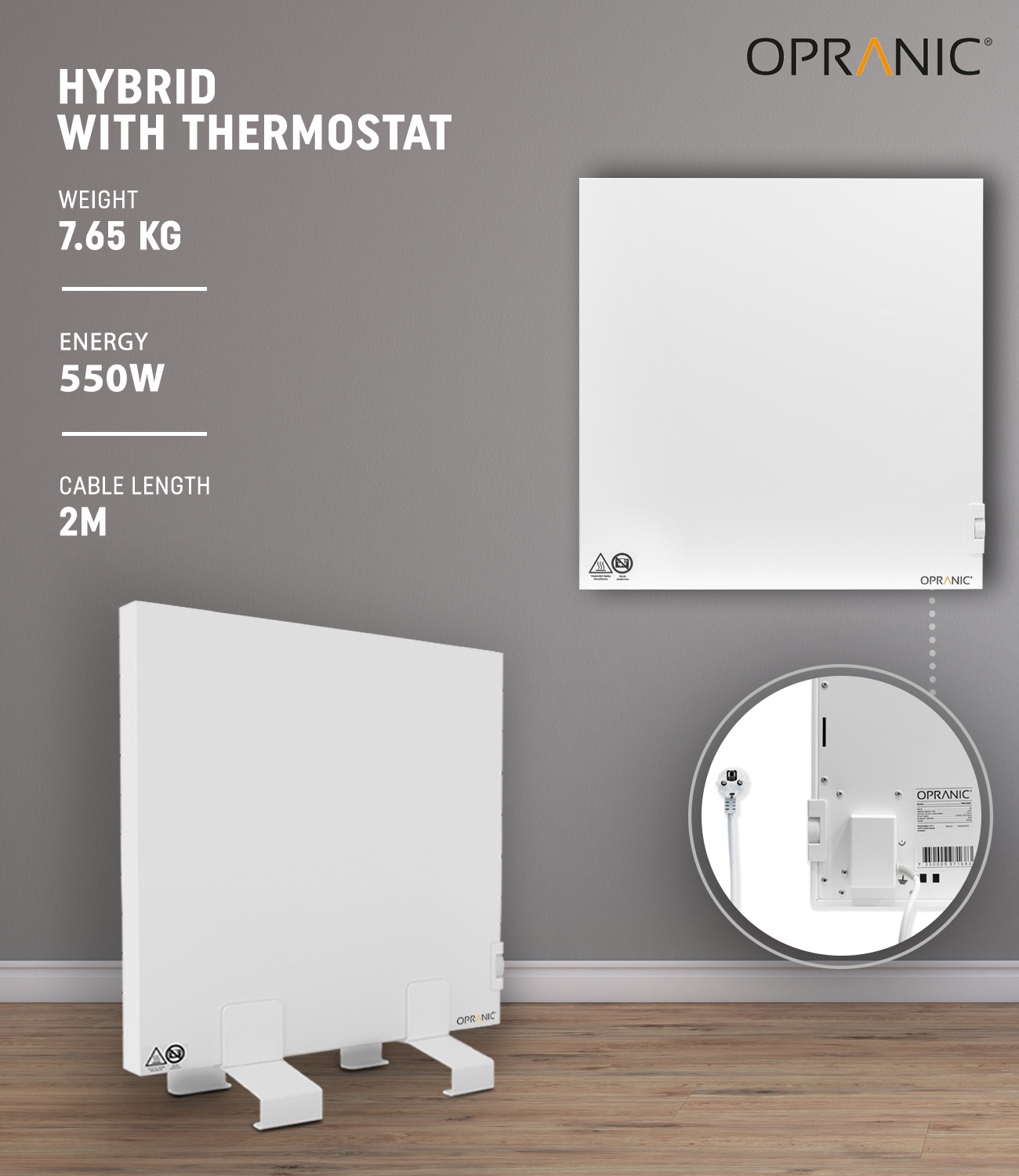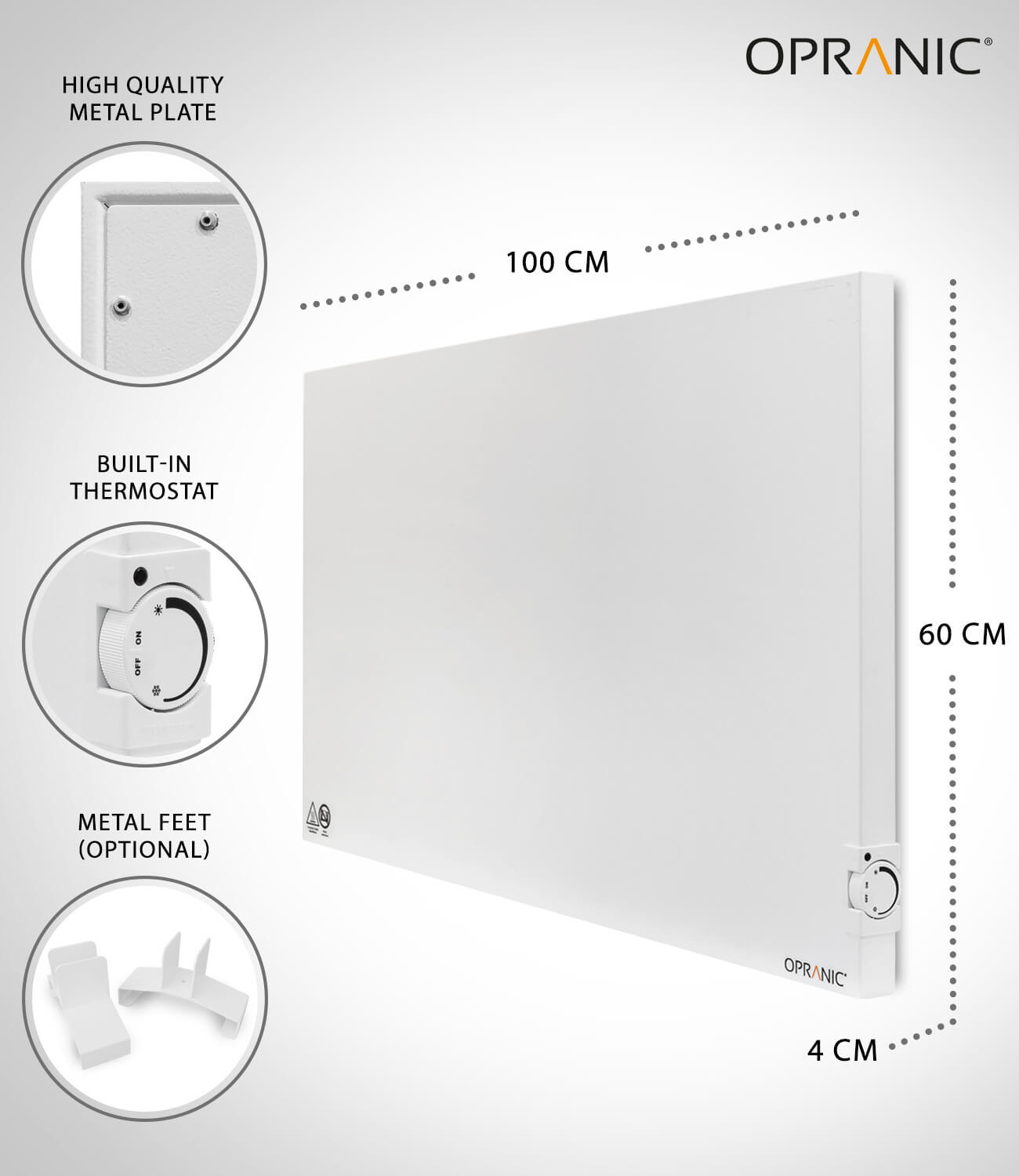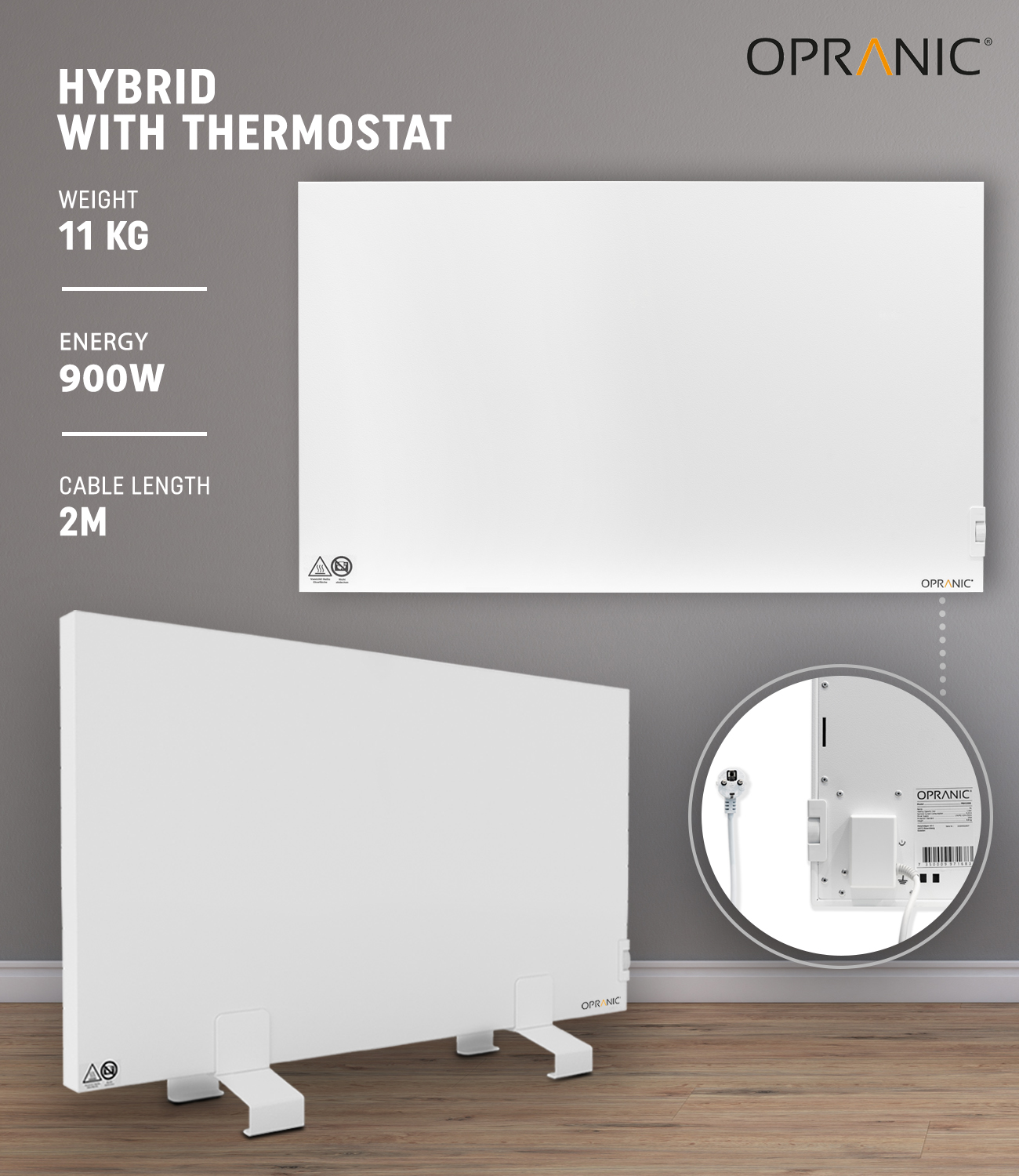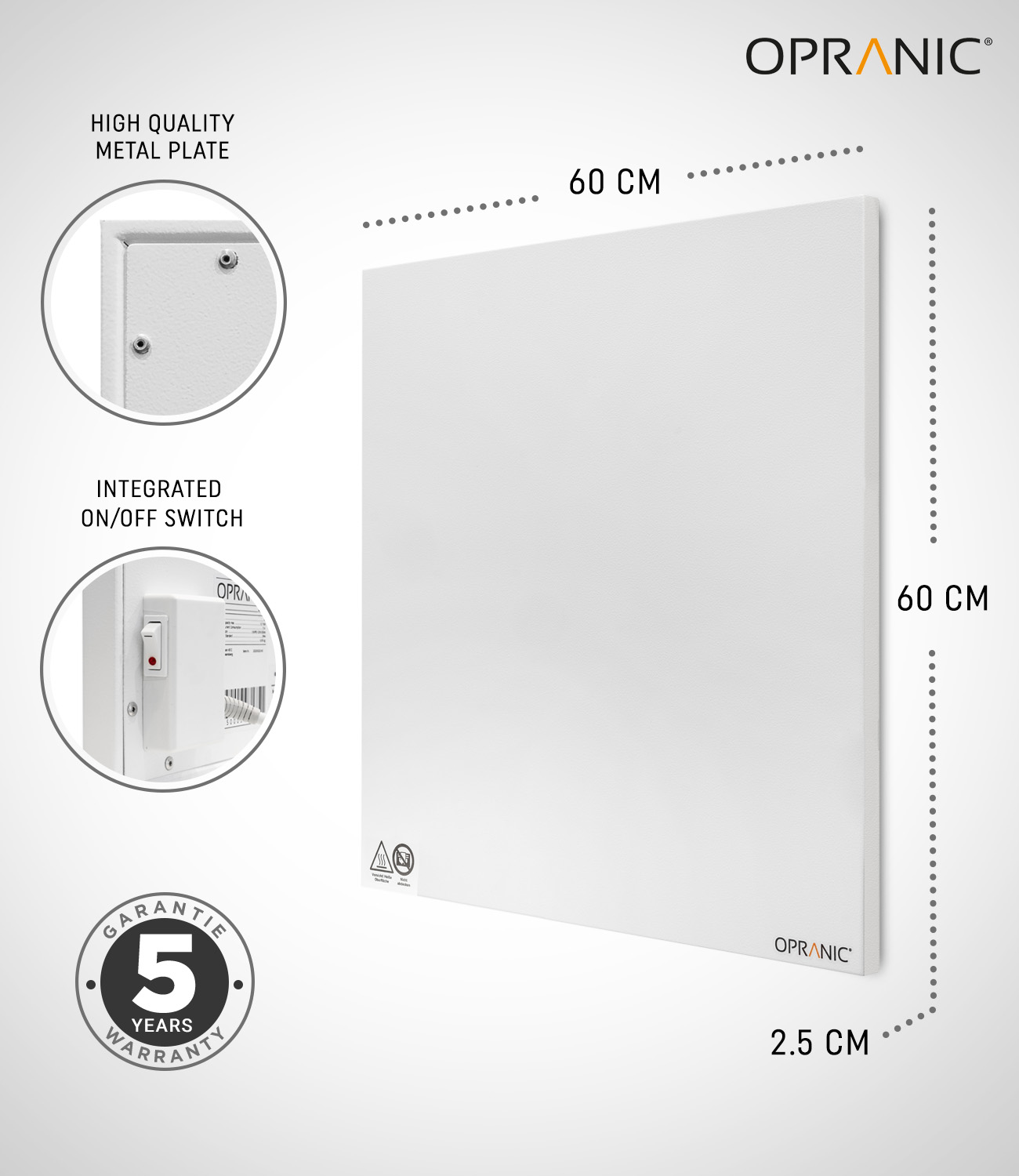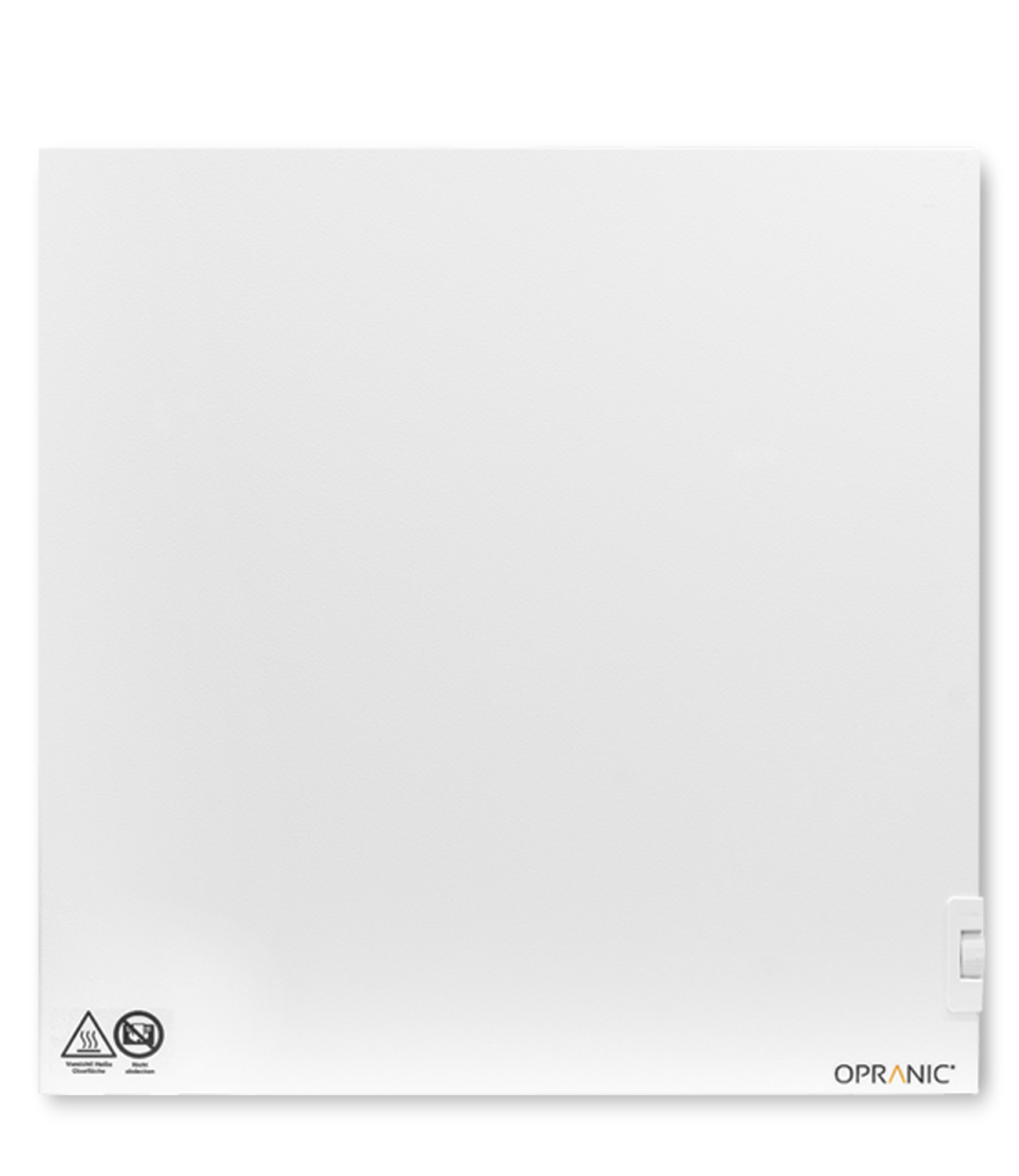Theory of Infrared Heating
Infrared heating works on the principle of thermal radiation, similar to the way the sun emits infrared rays. These rays travel millions of kilometres through space and, upon reaching a surface, are absorbed and converted into heat. Understanding this principle helps in choosing the right infrared heating solution for each environment to achieve optimal comfort and energy efficiency.
This article is Fact-checked & cross-referenced, se below
Mediumwave and Longwave – The Optimal Wavelengths
Mediumwave (IR-B) and longwave (IR-C) infrared radiation are ideal for comfort heating because they offer high absorption and low reflection. They do not penetrate deeply into the skin, providing a soft and natural warmth. Compared to shortwave (IR-A) radiation, they are significantly more efficient and comfortable for human environments.
Shortwave Intensity and Its Limitations
Shortwave infrared heaters operate at extremely high temperatures, generating an intense heat that can be felt even at a distance. However, much of the radiation is reflected and not absorbed by the human body. This makes shortwave heaters less efficient for comfort heating, although they can be effective outdoors in windy conditions where stronger radiation is needed to counter air movement.
Opranic’s Innovative Technology
Opranic develops advanced infrared heaters tailored to different applications. For outdoor comfort, we recommend our proprietary mediumwave technology (Classic or IR-X), peaking at around 2.4 μm. It produces a pleasant, gentle glow designed for human warmth. For indoor environments or enclosed spaces, our longwave (IR-C) models offer efficient comfort heating with lower intensity, making them perfect for calm, draft-free areas.
The Three Forms of Heat Transfer
Heat moves in three ways: conduction, convection, and radiation. Conduction transfers heat directly between materials in contact. Convection transfers heat through air or liquid movement. Radiation transfers energy directly from the source to the surface without heating the air in between. Infrared heating relies on this last method, delivering heat precisely where it’s needed without energy loss through air circulation.
OPRANIC Guide to the THEORY OF INFRARED HEATING: Principles and Benefits
The three ways of heat in the theory of infrared heating
Heat transfers between objects in three primary ways: conduction, convection, and radiation.
Conduction involves the direct transfer of thermal energy between two materials in contact, balancing out temperature differences. Convection results from temperature variations within a fluid, such as a liquid or gas, and is often described as the energy exchange between an object and the surrounding air. Radiation directly transfers radiant energy from the emitting source to an object, bypassing any intermediary medium. Like visible light, radiant energy travels directly from its source to the target, without heating the air in between.
EXPLORING INFRARED RADIATION with OPRANIC: A Key Aspect of the Theory of Infrared Heating
The electromagnetic spectrum includes all potential frequencies of electromagnetic radiation, such as gamma rays, X-rays, ultraviolet rays, visible light, infrared rays, microwaves, and radio waves. Radiant heat energy, released in the form of electromagnetic waves within the infrared band, operates on principles similar to those of visible light. OPRANIC’s infrared heating devices utilize these principles.
THE VERSATILITY OF OPRANIC’S INFRARED HEATING IN THE THEORY OF INFRARED HEATING
Infrared heating, leveraging radiant heat transfer, starts heating from the ground up rather than the ceiling. This characteristic makes OPRANIC’s infrared heaters cost-effective and efficient for various environments, including warehouses, storage spaces, and vast industrial structures.
Designed optimally, an OPRANIC infrared heating system offers significant energy usage reduction. Independent research shows fuel savings ranging from 20% to 50% compared to traditional warm air systems. OPRANIC infrared heaters provide flexible heating solutions, especially beneficial in challenging scenarios. They work effectively in spaces with high air infiltration, tall ceilings, or where targeted heating is desired.
INFRARED WAVELENGTHS
Infrared wavelengths categorize based on temperature ranges and wavelengths, measured in microns. The heater’s filament temperature indicates the type of infrared heater. The right heating radiation type depends on the target material since different materials absorb heat differently. If the infrared heating radiation isn’t suitable, much of the heat radiation gets wasted or reflected.
Shortwave (also known as IR-A or Near Infrared) in the theory of infrared heating
- Wavelengths: 0.78 – 1.4μm
- Shortwave infrared heaters operate within 780 nm to 1,400 nm.
- They emit temperatures ranging from 1300°C to 2600°C and produce bright visible light.
- Typically, the emitters are Quartz tubes filled with halogen gas, accompanied by a reflector to direct the heat.
Mediumwave (also known as IR-B) in the theory of infrared heating
- Wavelengths: 1.4 – 3.0μm
- Mediumwave infrared heaters function between 1,400 nm and 3,000 nm.
- They emit temperatures from 500°C to 1300°C and produce dim red light.
- The emitters are often Quartz with a reflector to focus the heat in a specific direction.
Longwave (also known as IR-C or Far Infrared) in the theory of infrared heating
- Wavelengths: 3.0 – 1000μm
- Longwave infrared heaters operate above 3,000 nm wavelengths.
- These heaters emit much lower temperatures, typically between 100°C and 500°C, and do not produce visible light.
ABSORPTION OF INFRARED RADIATION BY OPRANIC – A Key Aspect of the Theory of Infrared Heating
Materials vary in their heat absorption capacities based on their composition and thickness. For an infrared heater, like those offered by OPRANIC, to provide a comfortable, efficient, and natural heating experience, selecting the appropriate infrared heating technology is crucial. Factors such as the nature of the target material, the distance between the heater and the target, and the duration of heat exposure play a pivotal role in determining the right type of infrared heater.
HUMAN ABSORPTION WITH OPRANIC IN THE THEORY OF INFRARED HEATING
Humans consist of roughly 80% water. For optimal comfort heating, an infrared heater, like OPRANIC’s range, must emit wavelengths that water absorbs efficiently and reflects the least. The graph below shows the relationship between wavelength and the absorption of infrared radiation by water. This indicates that IR-B and IR-C, which are longer wavelengths above 2.0μm, are more readily absorbed by human skin, leading to more effective human heating through these medium and long wave bands. While heaters emitting IR-A can still warm the skin, they are less efficient due to reduced absorption capabilities.
REFLECTIVITY AND OPRANIC’S TECHNOLOGY IN THE THEORY OF INFRARED HEATING
Human skin naturally reflects specific wavelengths as a protective measure. Reflectance levels for IR-A, IR-B, and IR-C show that IR-A has high reflectance, whereas IR-B and IR-C exhibit significantly lower reflectance. This suggests that while IR-A intensely strikes the skin, most of its radiation reflects away, wasting energy. In contrast, the wavelengths of IR-B and IR-C (mediumwave and longwave) are predominantly absorbed and minimally reflected by the skin, making them ideal for efficient comfort heating.
PENETRATION DEPTH AND OPRANIC SAFETY STANDARDS IN THE THEORY OF INFRARED HEATING
The penetration depth of these wavelengths into the skin is another vital aspect. The diagram indicates that shortwave lengths delve deep into the skin’s sub-layers. Despite the skin’s natural defense mechanisms, which include reduced absorption and high reflectance against shortwave radiation, the intense radiation from shortwave heaters can penetrate deeply, potentially accelerating the skin’s aging process. Medium and longwave radiation wavelengths from OPRANIC heaters don’t penetrate as deeply, making them a safer choice that’s less detrimental to the skin’s aging process.
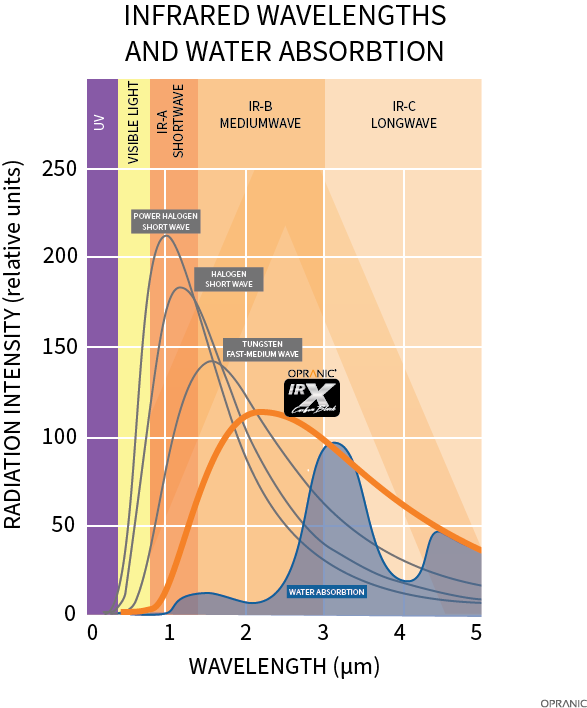
AI-assisted | Fact-checked and cross-referenced | 31 Oct 2025
Report: Analysis and Verification of Infrared Heating Technology
1. Introduction
This report examines the principles and claims of infrared (IR) heating technology as presented in the source article from Opranic. The primary claims, high efficiency, method of heating, and safety profile by wavelength, were cross-referenced against independent, trusted sources, including government energy departments and scientific publications. This document summarizes the principles and verifies the stated benefits.
2. The Principle of Infrared Heating vs. Convection
Convection Heating: Heats the air in a room. The warm air rises, creating circulation that distributes heat but can cause heat loss through drafts and by warming the upper volume first.
Infrared (Radiant) Heating: Does not heat the air directly. It emits infrared radiation that travels until it strikes an object (people, walls, furniture). The object absorbs the radiation and converts it to heat.
This core principle is confirmed by the U.S. Department of Energy: radiant systems deliver heat directly from a hot surface to people and objects via infrared radiation
[1]. By warming the room’s thermal mass, heat is then released slowly for more even comfort.
3. Energy Efficiency and Cost-Effectiveness
The article claims potential “fuel savings ranging from 20% to 50% compared to traditional warm-air systems.” Independent sources support the mechanisms and ranges:
- Reduced Waste: Radiant heating is usually more efficient than forced-air because it eliminates duct losses
[1]. - Targeted Heating: For intermittently occupied spaces, radiant heaters save energy by directly heating occupants rather than the whole room
[2]. - Energy Savings: Industry and technical analyses cite savings up to ~50% compared to traditional methods
[3, 4].
4. Wavelengths, Comfort, and Safety
A key claim is that medium-wave (IR-B) and long-wave (IR-C / Far Infrared) are superior for human comfort and safety compared to short-wave (IR-A).
- Short-wave (IR-A): Very high temperatures and bright light; more strongly reflected by skin; penetrates more deeply and is associated with premature skin aging.
- Medium-wave (IR-B) & Long-wave (IR-C): Lower temperature output and dim/no visible light; better absorbed by the body’s water content; shallower penetration profile.
Penetration Depth: Scientific literature indicates IR-C is absorbed by the stratum corneum (outermost skin), IR-B reaches the upper epidermis, and IR-A penetrates into deeper dermal layers
[5].
Safety and Aging: Technical reviews report short-wave IR (IR-A) can contribute to premature aging and poses higher risk due to deeper penetration
[6].
Absorption & Comfort: Longer wavelengths exhibit higher absorption and lower reflectance on skin—favorable for effective comfort heating
[6].
5. Other Verifiable Benefits
Because radiant systems do not rely on moving air, they avoid distributing dust and pollen like forced-air systems. The U.S. Department of Energy notes that people with allergies often prefer radiant heat for this reason
[1].
6. Conclusion
- Principle: Verified, infrared heating warms people and objects directly (radiant), not the air (convection)
[1]. - Efficiency: The 20–50% savings claim is supported by multiple sources and is linked to eliminating duct losses and enabling targeted heating
[1, 2, 3, 4]. - Wavelength Safety: Technical and scientific sources support that IR-B/IR-C are better for surface-level comfort heating, while IR-A penetrates deeper and is associated with skin aging risks
[5, 6].
References
- U.S. Department of Energy. “Radiant Heating.” energy.gov.
- U.S. Department of Energy. “Small Space Heaters.” energy.gov.
- Aura Heaters. “Infrared Heat: What It Is and How It Works.”
- Infrared Heating Supplies. “Infrared Heating vs Traditional (Gas, Oil, Electric).”
- ResearchGate. “The effects of infrared radiation on the human skin.”
- Ceramicx. “Preferred Infrared Wavelengths for Comfort Heating — White Paper.”
Method: AI-assisted checks + human review. Automated checks may miss nuance or recent updates.

